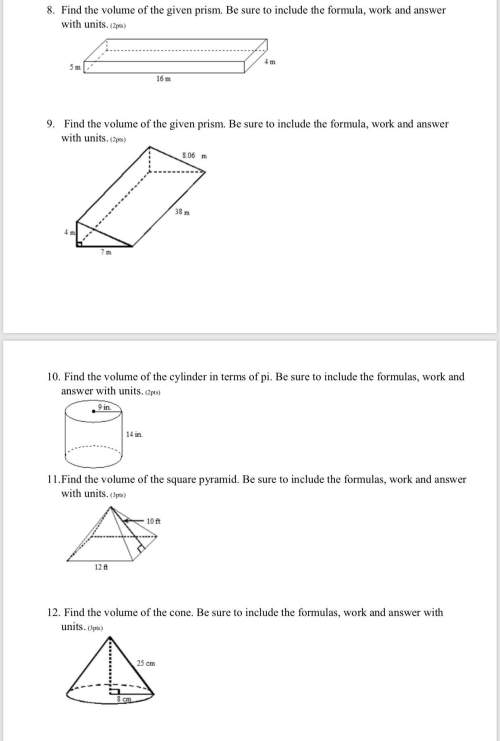
Mathematics, 27.04.2021 15:50 elijah207
1. Jamie believes that people who watch the news each night do better on a history test (out of 15 points) than people who do not. To test this theory, Jamie asks 7 people to watch the news for an hour each night before bed for one month, and then administers a history test to these participants (in 2012). Jamie knows that, in the general population, people who do not watch the news each night score 7.5 points, on average, on this history test. The data follows. Do people who watch the news each night do significantly better on the history test than people who do not watch the news Assume normal distributions and a = .05.
2012 2013
10 4
12 5
6 10
11 7
9 6
14 6
10 9
2. In question 1, what is Jamie’s independent variable?
3. In question 1, is Jamie’s independent variable measured on a discrete or continuous scale?
4. In question 1, on what scale of measurement is Jamie’s dependent variable measured?
5. Using the data from question 1, construct a frequency distribution graph to display the 7 history scores Jamie obtained from his sample in 2012. What proportion of people in this group scored under 50% on the test?
6. If the distribution of history scores (for the history test mentioned in question 1) is approximately normal in the general population, what is the probabililty of randomly selecting a group of 7 people whose average score is at least 6, if µ = 7.5 and σ = 2?
7. Using the data from question 1, construct the two-tailed 99% confidence interval for the true population mean test score if everyone watched the news each night.
8. Would you have made the same decision based on your results in question 7 as you did in question 1 (i. e., reject or fail to reject the null)? If so, just answer "yes." If not, explain why the decision can be different even though you are asking the same question.

Answers: 2
Another question on Mathematics

Mathematics, 21.06.2019 19:10
Which graph represents the function g(x) = |x + 4| + 2?
Answers: 1

Mathematics, 21.06.2019 22:00
20 points 1. your friend, taylor, missed class today and needs some identifying solutions to systems. explain to taylor how to find the solution(s) of any system using its graph. 2. taylor graphs the system below on her graphing calculator and decides that f(x)=g(x) at x=0, x=1, and x=3. provide taylor some feedback that explains which part of her answer is incorrect and why it is incorrect. f(x)=2x+1 g(x)=2x^2+1
Answers: 2


Mathematics, 22.06.2019 01:10
Time (minutes) amount of water (gallons) practice 1. jin fills up a 510-gallon pool in the backyard for her children. she fills it with the garden hose at a rate of 17 gallons per minute. after it is filled, she lets it sit for 30 minutes in order to let the water temperature rise. the children then get in and have fun for an hour. the pool loses about 5 gallon of water each minute due to their splashing and playing. at the end of the hour, they tear the pool while getting out, which causes a leak the pool then begins to lose water at a rate of 2 gallons per minute. a. complete the table to show the amount of water in the pool after each minute. b. create a graph to model the problem situation. include when the pool will be empty. c. write a piecewise function that models this problem situation. explain your reasoning for each piece of the function. d. identify the x- and y-intercept. explain what they mean in terms of the problem situation, atamantha a cul 80 100 120 150 200 ning, inc
Answers: 3
You know the right answer?
1. Jamie believes that people who watch the news each night do better on a history test (out of 15 p...
Questions

Geography, 07.10.2019 06:20


Health, 07.10.2019 06:20



Health, 07.10.2019 06:20


Mathematics, 07.10.2019 06:20

Mathematics, 07.10.2019 06:20

History, 07.10.2019 06:20

Mathematics, 07.10.2019 06:20

History, 07.10.2019 06:20

History, 07.10.2019 06:20




Chemistry, 07.10.2019 06:20


English, 07.10.2019 06:20

Health, 07.10.2019 06:20




